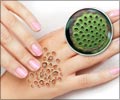Results from a recent study challenge the classification of paruresis as a social phobia. Paruresis would be better classified as a functional disorder of micturition.
Paruresis manifests in an inability to urinate in public restrooms followed by a considerable avoidance behavior.Recently, a study, to be published in the Journal of Anxiety Disorders (available online 8 April 2005), was initiated on the assumption that paruresis is a form of social phobia. They hypothesized that paruretic subjects differ from pure social phobic subjects only in the severity of paruretic symptoms, not in the severity of social anxiety symptoms or lower urinary tract symptoms. Also, that in contrast to pure social phobic subjects, the level of interference with everyday life in paruretic subjects can be predicted mainly by the severity of paruretic symptoms.
For the study, a sample of 226 subjects completed different questionnaires concerning paruresis, social phobic symptoms, lower urinary tract symptoms and depressive symptoms.These individuals were divided into four groups: no symptoms, suffering primarily from paruresis, non-generalized social phobia and generalized social phobia. The paruretic group was found to differ significantly in all symptom variables from both the non-generalized and the generalized social phobia groups.
Regression analysis separated by groups showed that the interference with everyday life can be mainly explained by paruretic symptoms (in the paruretic group) or by social anxiety and depressive symptoms, respectively (in the social phobic groups). These results question the classification of paruresis as simply being a form of social phobia.
Despite the possible limitations or special characteristics of the sample, the present results challenge the classification of paruresis as a social phobia. The results suggest that this classification may not be accurate and that paruresis would be better classified as a functional disorder of micturition.
The authors, Philipp Hammelsteina and Steven Soiferb, add that it is also possible that there are different forms of paruresis, some of which could be more like a discrete social phobia, and others which are more urological in nature. They suggest futher studies to clarify the characteristics of this often neglected disorder.











